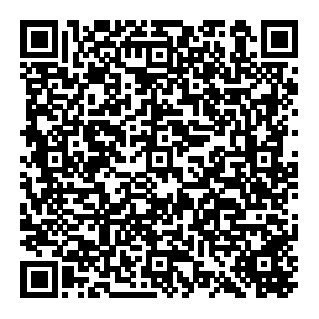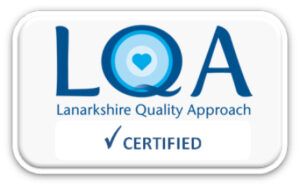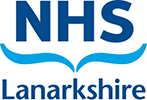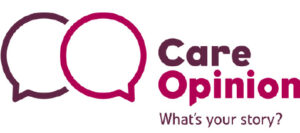How to protect your baby from low blood sugar
Information for patients
NHS Lanarkshire Maternity Department
PIL.HYPPRT.19_20084.L
What is low blood glucose?
You have been given this leaflet because your baby is at increased risk of having low blood glucose (also called low blood sugar or hypoglycemia).
Babies who are small, premature, unwell at birth, or whose mothers are diabetic or have taken certain medication (beta-blockers), may have low blood glucose in the first few hours and days after birth, and it is especially important for these babies to keep warm and feed as often as possible in order to maintain normal blood glucose levels.
If your baby is in one of these “at risk” groups, it is recommended that they have some blood tests to check their blood glucose level. Extremely low blood glucose, if not treated, can cause brain injury resulting in developmental problems. If low blood glucose is identified quickly, it can be treated to avoid harm to your baby.
Blood glucose testing
Your baby’s blood glucose is tested by a heel-prick blood test. A very small amount of blood is needed and it can be done while you are holding your baby in skin-to-skin contact. The first blood test should be done before the second feed (2-4 hours after birth), and repeated until the blood glucose levels are stable.
You and your baby will need to stay in hospital for the blood tests.
You will know the result of the test straight away.
How to avoid low blood glucose
Skin-to-skin contact
Skin-to-skin contact with your baby on your chest helps keep your baby calm and warm and helps establish breastfeeding. During skin-to-skin contact your baby should wear a hat and be kept warm with a blanket or towel.
Keep your baby warm
Put a hat on your baby for the first few days while he/he is in hospital. Keep your baby in skin contact on your chest covered with a blanket and look into you babies eyes to check his / her well-being in this position, or keep warm with blankets if left in a cot.
Feed as soon as possible after birth
Ask a member of staff to support you with feeding until you are confident, and make sure you know how to tell if breastfeeding is going well, or how much formula to give your baby.
Feed as often as possible in the first few days
Offer your baby a feed whenever you notice “feeding cues” which include:
- rapid eye movements under the eyelids
- mouth and tongue movements
- body movements and sounds
- sucking on a fist
Don’t wait for your baby to cry – this can be a late sign of hunger.
Feed for as long, or as much, as your baby wants
To ensure your baby gets as much milk as possible.
Feed as often as baby wants, but do not leave your baby more than three hours between feeds
If your baby is not showing any feeding cues yet, hold them skin-to-skin and start to offer a feed about three hours after the start of the previous feed.
Express your milk (colostrum)
If you are breastfeeding and your baby struggles to feed, try to give some expressed breast milk. A member of staff will show you how to hand express your milk, or watch the UNICEF hand expression video (search “UNICEF hand expression”). If possible, it is good to have a small amount of expressed milk saved in case you need it later, so try to express a little extra breast milk in between feeds.
Ask your midwife how to store your expressed milk.
Don’t hesitate to tell staff if you are worried about your baby
If your baby appears to be unwell, this could be a sign that they have low blood glucose. As well as doing blood tests, staff will observe your baby to check he / she is well, but your observations are also important, as you are with your baby all the time so know your baby best.
It is important that you tell staff if you are worried
that there is something wrong with your baby, as parents’ instincts is often correct.
Signs that your baby is well
Is your baby feeding well?
In the first few days your baby should feed effectively at least every three hours, until blood glucose is stable, and then at least eight times in 24 hours. Ask a member of staff how to tell if your baby is attached and feeding effectively at the breast, or how much formula they need. If your baby becomes less interested in feeding than before, this may be a sign they are unwell and you should raise this with a member of staff.
Is your baby warm enough?
Your baby should feel slightly warm to touch, although hands and feet can sometimes feel a little cooler. If you use a thermometer the temperature should be between 36.50C and 37.50C inclusive.
Is your baby alert and responding to you?
When your baby is awake, they will look at you and pay attention to your voice and gestures. If you try to wake your baby, they should respond to you in some way.
Is your baby’s muscle tone normal?
A sleeping baby is very relaxed, but should still have some muscle tone in their body, arms and legs and should respond to your touch. If your baby feels completely floppy, with no muscle tone when you lift their arms or legs, or if your baby is making strong repeated jerky movements, this is a sign they may be unwell. It can be normal to make brief, light, jerky movements. Ask a member of the team if you are not sure about your baby’s movements.
Is your baby’s colour normal?
Look at the colour of the lips and tongue – they should be pink.
Is your baby breathing easily?
Babies’ breathing can be quite irregular, sometimes pausing for a few seconds and then breathing very fast for a few seconds. If you notice your baby is breathing very fast for a continuous period (more than 60 breaths per minute), or seems to be struggling to breathe with very deep chest movements, nostrils flaring or making noises with each breath out – this is not normal.
Who to call if you are worried
In hospital, inform any member of the clinical staff. At home, call your community midwife for advice. Out of hours, call NHS 24 or (01698 366220) If you are really worried, take your baby to your nearest Emergency Department or dial 999.
What happens if your baby’s blood glucose is low?
If the blood glucose test result is low, your baby should feed as soon as possible and provide skin-to-skin contact.
Another blood glucose test will be done before the next feed, or within 2-4 hours.
If the level is very low the neonatal team may advise urgent treatment to raise the blood glucose and this could require immediate transfer to the Neonatal Unit.
If you are breastfeeding and your baby does not breastfeed straight away, a member of staff will review your baby to work out why. If he/she is happy that your baby is well, she/he will support you to hand express your milk and give it by oral syringe/finger/cup/ spoon.
If the blood glucose is low, the team will prescribe a dose of dextrose (sugar) gel as part of the feeding plan because this can be an effective way to bring your baby’s glucose level up.
Rarely, if your baby has not breastfed, and you have been unable to express any of your milk, you may need to give some infant formula. This is most likely to be for one, or a few feeds only, the reason this was required would be fully explained and formula milk would not be given without your consent. You should continue to offer breastfeeds and try to express milk as often as possible to ensure your milk supply is stimulated.
Very occasionally, if babies are too sleepy or unwell to feed, or if the blood glucose is still low after feeding, he/she may need to go to the Neonatal Unit/Special Care Baby Unit. Staff will explain any treatment that might be needed. In most cases, low blood glucose quickly improves within 24 – 48 hours and your baby will have no further problems.
Going home with baby
It is recommended that your baby stays in hospital for 24 hours after blood glucose monitoring stops; they will be able to go home when they are feeding well.
Before you go home, make sure you know how to tell if your baby is getting enough milk. A member of staff will explain the normal pattern of changes in the colour of dirty nappies and number of wet/dirty nappies. For further information, if you are breastfeeding, see ‘How you and your midwife can recognise that your baby is feeding well’
It is important to make sure that your baby feeds well at least eight times every 24 hours and most babies feed more often than this.
There is no need to continue waking your baby to feed every 2-3 hours as long as they had at least eight feeds over 24 hours, unless this has been recommended for a particular reason. You can now start to feed your baby responsively. Your midwife will explain this.
If you are bottle feeding, make sure you are not overfeeding your baby. Offer the bottle when they show feeding cues and observe for signs that they want a break. Don’t necessarily expect your baby to finish a bottle – let them take as much milk as they want.
Once you are home, no special care is needed. As with all newborn babies, you should continue to look for signs that your baby is well, and seek medical advice if you are worried at all about your baby.

Pub. date: September 2020
Review date: September 2022
Issue No: 02
Reference: PIL.HYPPRT.19_20084.L
20_15098
If you need this information in another language or format, please e-mail:




